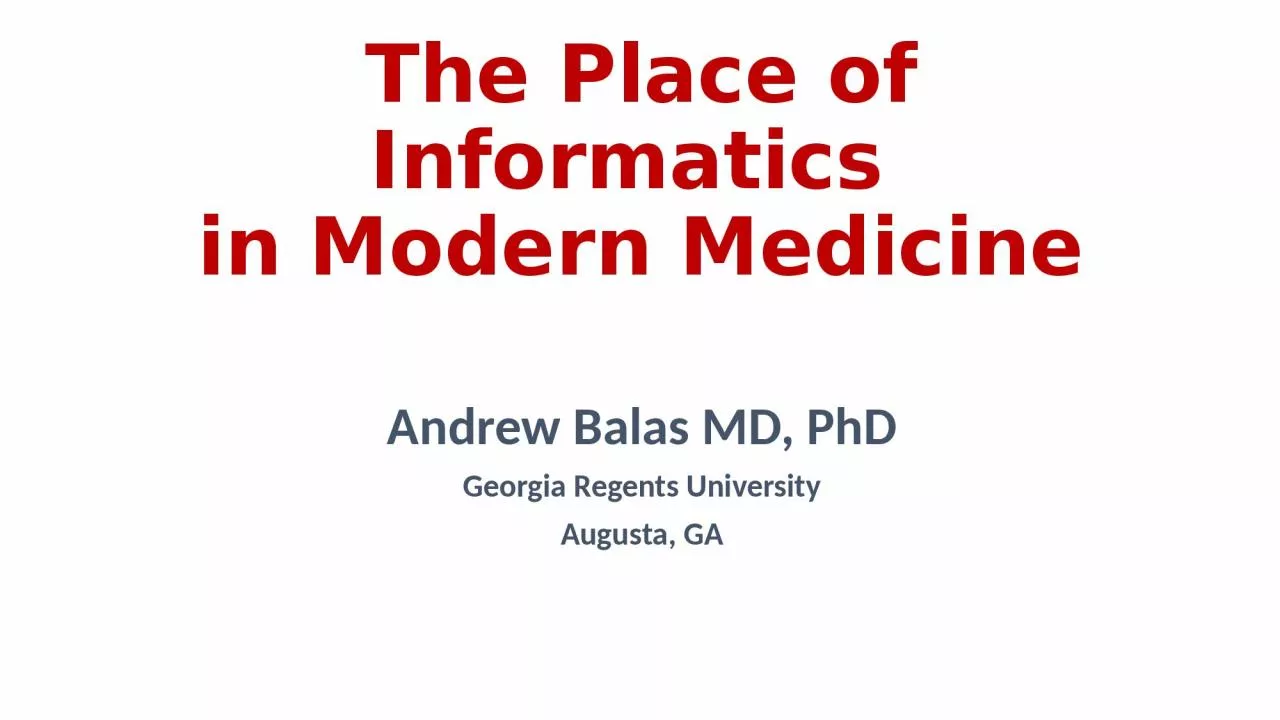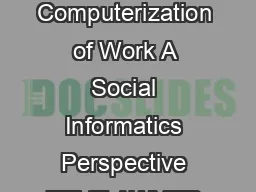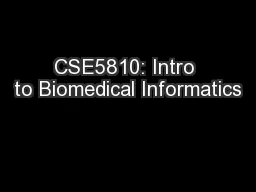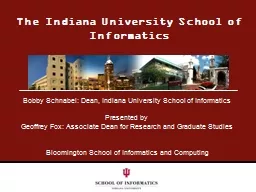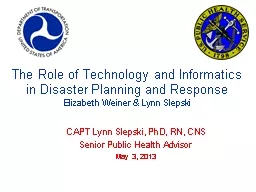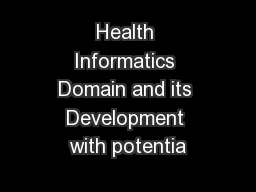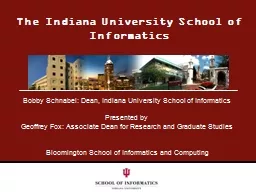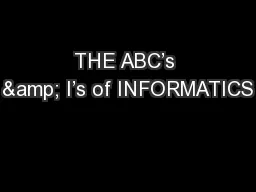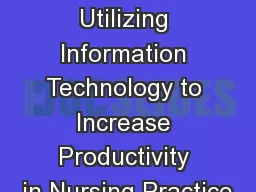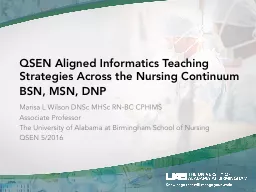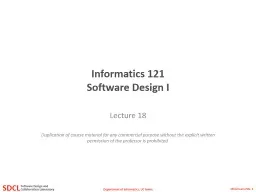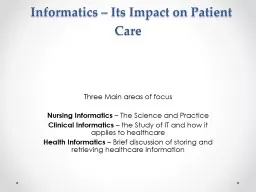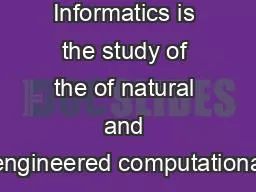PPT-The Place of Informatics
Author : rodriguez | Published Date : 2024-02-09
in Modern Medicine Andrew Balas MD PhD Georgia Regents University Augusta GA 50 years of excellence The following candidates also took the EHR test but failed
Presentation Embed Code
Download Presentation
Download Presentation The PPT/PDF document "The Place of Informatics" is the property of its rightful owner. Permission is granted to download and print the materials on this website for personal, non-commercial use only, and to display it on your personal computer provided you do not modify the materials and that you retain all copyright notices contained in the materials. By downloading content from our website, you accept the terms of this agreement.
The Place of Informatics: Transcript
Download Rules Of Document
"The Place of Informatics"The content belongs to its owner. You may download and print it for personal use, without modification, and keep all copyright notices. By downloading, you agree to these terms.
Related Documents

